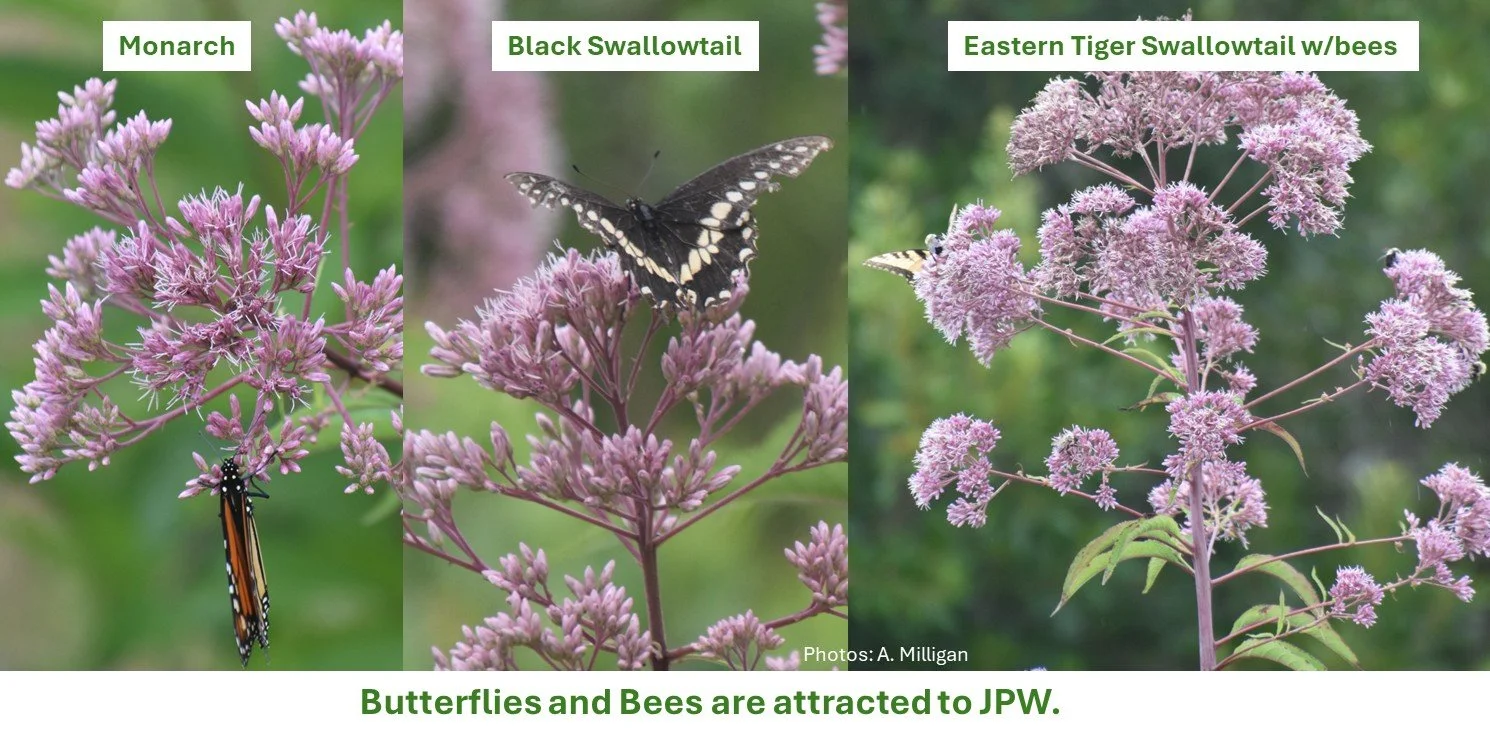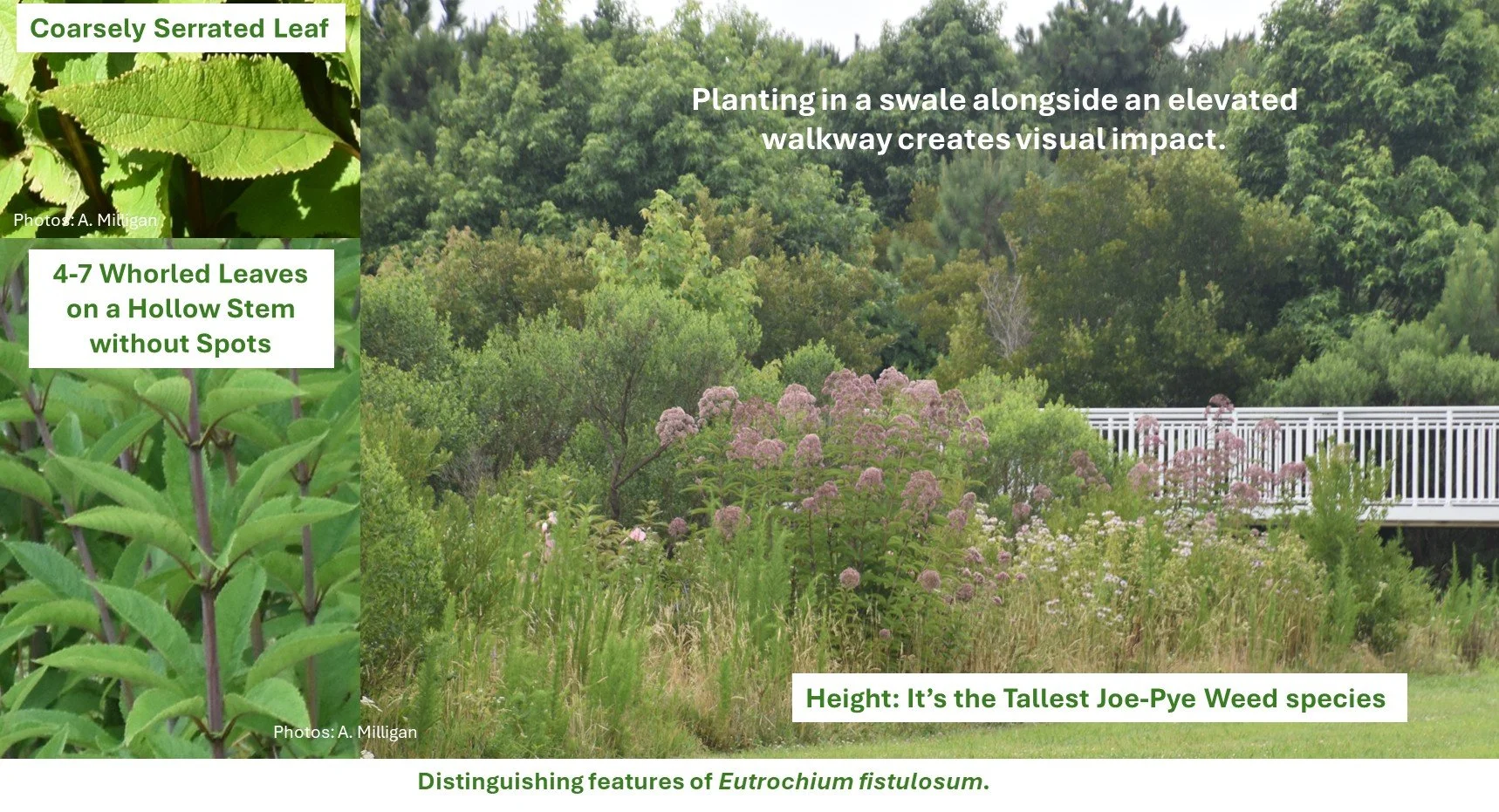Latin for Gardeners
August’s Native Maryland Plant
Eutrochium fistulosum (Barratt) E. E. Lamont
(yoo-TRO-kee-um fist-yoo-LOW-sum)
Common Name: Trumpetweed, Hollow Joe-Pye-Weed
Some plants just amaze you when you’re in their presence - Trumpetweed is one of those plants. It’s a staggeringly tall plant that towers over observers and almost any neighboring perennial or shrub. With many weeks left before the end of summer, Trumpetweed is still going strong, its long bloom period is another of its awesome features. The mauve to purple flowers sit atop hollow but robust stems – the stems lack the spots that are found on a related plant, Spotted Joe-Pye-Weed (Eutrochium maculatum), and are one of the ways to differentiate the two species.
Eutrochium species, in general, are magnificent at attracting butterflies due to their abundant nectar and wide, flat flower heads that offer a stable landing pad. They’re an excellent alternative to the invasive Butterfly bush (Buddleia spp.) since they not only supply nectar, but as we’ve learned from Dr. Doug Tallamy (1) , they “also provide food for the larvae of more than three dozen species of Lepidoptera.” The plight of butterflies has been in the news for some time but a recent study underscores just how dire the situation has become. This research was focused on butterflies, but we know moths and other pollinators are similarly suffering dramatic losses. Planting host plants, lots of host plants, is one way to help reverse this trend - reducing the use of pesticides is another.
The height of Eutrochium spp. can be intimidating to most gardeners – do not be afraid. There are many smart methods you can use to add this species to your garden. Below are just a few of the ways to keep the plant upright, if this is one of your concerns. There are also cultivars of some of the other already shorter Eutrochium species that may be more acceptable to gardeners. E.g. Eutrochium dubium ‘Little Joe’.
The history of this plant’s common name, Joe Pye Weed, has long been discussed, with several different stories describing its origin. Interestingly, in 2017, two scholars did their research and published a paper in the Great Lakes Botanist journal. They established that the plant was likely named for Joseph Shauquethqueat, an esteemed Mohican sachem, known to his white neighbors as Joe-Pye. Having spent my youth in New England, the original home to the Mohegans (often confused with the Mohicans), I am somewhat familiar with this Hudson River Valley (present-day Eastern New York and western Massachusetts) tribe and their place in history.
I’m wondering, since many botanical names have been changed due to modern DNA analysis, including this genus, Eutrochium (2) , would there be any objection to changing the common name from Joe-Pye-Weed, to Shauquethqueat, thus removing the ‘weed’ and providing a more accurate provenance for this remarkable species?
(1) ‘Bringing Nature Home’, Doug Tallamy
(2) Known previously as Eupatorium fistulosum. Bonesets which have opposite leaves are still Eupatorium spp.
Alison Milligan – MG/MN 2013
Watershed Steward Class 7/Anne Arundel Tree Trooper
Chesapeake Bay Landscape Professional (CBLP)
aligmilligan@gmail.com





